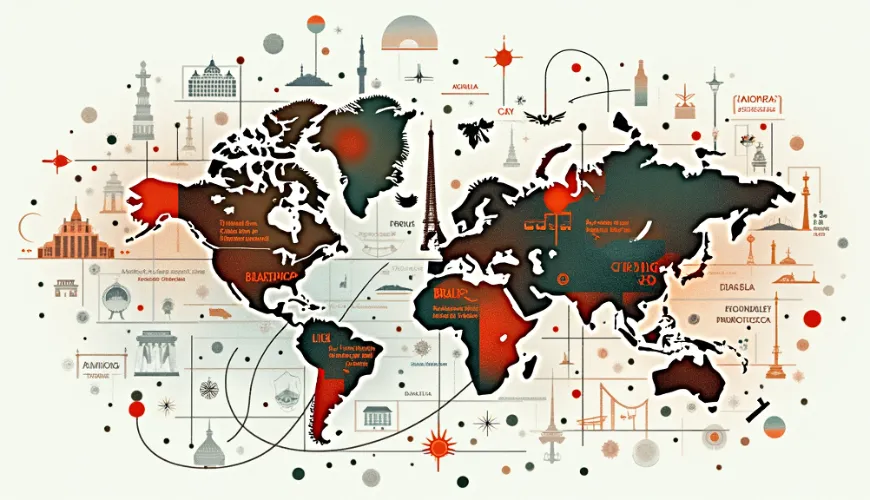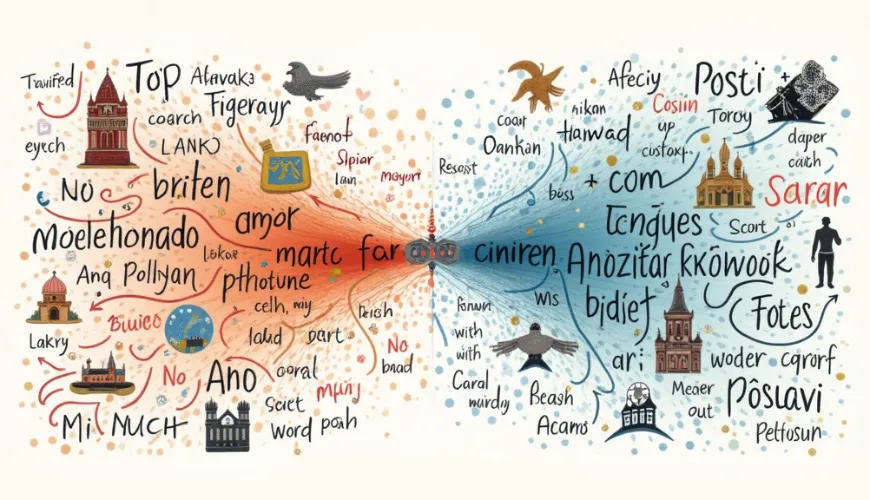TL;DR
• Translate Portuguese to English in minutes with AI or human help.
• Compare the top tools and avoid common pitfalls.
• See why Claila's multi‑model workspace is the most accurate, privacy‑friendly choice.
Whether you're planning a trip to Lisbon, expanding your business into Brazil, or just trying to understand a Portuguese meme, Portuguese to English translation is something many people need but few know how to do effectively. with Portuguese ranking among the top ten languages worldwide (≈ 270 M speakers) and English being the global lingua franca, having access to accurate and fast translation tools is more important than ever.
In this guide, we'll break down the best ways to translate Portuguese into English, explore the top tools and services, and offer real‑world tips to help you translate like a pro—without needing to be fluent in either language.
Ready to try an AI translator that speaks flawless Portuguese and English? Create your free Claila account below and follow along.
Why Portuguese to English Translation Matters More Than You Think
Portuguese is spoken by over 260 million people worldwide, primarily in Brazil and Portugal, but also in countries like Angola, Mozambique, and Cape Verde. English, on the other hand, is often the go-to language for global commerce, tech, and academia.
That means translating Portuguese to English opens doors to:
- Better communication with international clients or colleagues
- Access to Portuguese-only news, research, and content
- Greater understanding of cultural materials like music, books, and films
And it's not just for travelers or language learners. Entrepreneurs, digital marketers, researchers, and even casual social media users often need quick and reliable translations between these two languages.
Common Challenges When Translating Portuguese to English
Portuguese and English belong to different language families, which means they don't always line up one-to-one. Some terms don't have direct equivalents. Plus, word order and grammar structures can vary significantly.
Here are a few common hurdles:
- False cognates: Words that look similar in both languages but mean different things. For example, pasta in Portuguese means "folder," not "spaghetti."
- Verb tenses and moods: Portuguese has more complex verb conjugations and uses the subjunctive mood more often than English.
- Gendered nouns and articles: Unlike English, Portuguese nouns have genders and must match with the correct articles and adjectives.
All of that means word-for-word translation often fails to capture meaning, tone, or nuance.
Manual Translation vs. Automated Tools
When it comes to Portuguese to English translation, your choice often comes down to speed vs. accuracy.
Manual Translation
Hiring a professional translator or doing it yourself offers the most accurate results. Human translators understand context, slang, idioms, and cultural references that machines often miss.
Best for: legal documents, business contracts, literary works, and marketing content that demand absolute accuracy and a consistent brand voice.
But manual translation can be time-consuming and costly—especially for longer texts.
Machine Translation
Modern translation tools have come a long way. Thanks to AI and large language models, real-time translation is now not only possible but surprisingly accurate for everyday needs.
Apps and platforms using AI models like ChatGPT, Claude, or Mistral (all available inside Claila) offer fast, context‑aware translations that surpass traditional machine translation systems. If you need to polish the output further, check out How to Make ChatGPT Sound More Human for pro‑level prompt tips.
Best for: everyday tasks such as emails, website copy, casual chats, and social‑media captions where speed matters more than perfect nuance.
Best Tools for Portuguese to English Translation
Looking for the best way to translate Portuguese into English? These tools can help, whether you're translating full paragraphs or just a single word.
1. Claila
Claila gives you access to multiple AI-powered language models like ChatGPT, Claude, and Mistral. This means smarter translations that consider context, tone, and even slang. Just paste in your Portuguese text, ask for a translation, and you're good to go.
What sets Claila apart is the convenience of switching between different models to cross-check your translations for accuracy.
2. DeepL
DeepL is often cited as one of the most accurate translation tools available, especially for European languages. It uses neural networks to generate more natural-sounding translations.
Use it for:
- Translating business documents
- Academic papers
- Emails and reports
3. Google Translate
Google Translate is fast, free, and accessible. It's great for travel or simple communication. However, it can struggle with nuance and context in complex texts.
Why it's still useful:
- Real-time voice translation
- Camera translation for signs and menus
- Offline translation for mobile
4. Microsoft Translator
This tool is especially handy for business users in the Microsoft ecosystem. It integrates with Office tools and offers live translation features for meetings and presentations.
How to Translate Portuguese to English More Accurately
Even with the best tools, there are ways to improve your results. Follow these quick tips to avoid common translation pitfalls:
- Keep it simple: Write or input clear, straightforward Portuguese. Avoid slang or highly regional terms if possible.
- Double-check idioms: Idioms rarely translate directly. If you're using machine translation, double‑check tricky phrases with Claila's AI Sentence Rewriter to ensure they read naturally.
- Break up long sentences: Run-on sentences confuse AI. Break them into shorter ones for better translation accuracy.
- Use context: Providing the context of a phrase (e.g., legal, technical, casual) helps AI models generate more relevant translations.
Real-World Uses for Portuguese to English Translation
Wondering where this applies in your life? Ask AI Anything and see instant examples—or check the real‑world scenarios below:
- Remote Work: You're a freelancer in Portugal working with clients in the U.S. and need to translate invoices, emails, and project updates.
- Travel: You're vacationing in Rio de Janeiro and want to understand local signs, menus, or even chat with locals without getting lost in translation.
- eCommerce: You're selling handmade items in Brazil and want to attract international buyers by translating your product descriptions into flawless English.
- Education: You're conducting a research project that includes academic papers written in Portuguese and need reliable translations to cite them.
Portuguese to English Translation: Low-Competition Keywords to Know
If you're building a blog, optimizing a site, or just looking to reach more users through SEO, targeting low-difficulty keywords can supercharge your traffic. Here are some low-KD (≤3) keywords closely related to our main topic:
Low‑KD keyword ideas worth weaving into sub‑headings and alt text include "translate Portuguese to English free,” "Portuguese English translator tool,” "best Portuguese translator online,” "real‑time Portuguese to English,” "Portuguese to English app,” and "simple Portuguese to English sentences.”
Using these keywords naturally in your content can help you rank higher while still delivering helpful info to your audience. For troubleshooting sudden traffic drops caused by AI outages, see Why Is ChatGPT Not Working?.
A Closer Look: Translate Portuguese to English Free and Fast
Free is great, but not if it means sacrificing quality. The key is to use platforms that balance both. Claila, for instance, offers access to multiple language models—so you're not stuck with just one translation engine.
You can input something like:
"Eu gostaria de agendar uma reunião amanhã às três da tarde."
And get a fluent English translation like:
"I would like to schedule a meeting tomorrow at three in the afternoon."
Having multiple AI models at your fingertips also lets you cross-verify tricky phrases or technical content. It's like having multiple translators on call, without the hefty bill.
Portuguese to English App Options
If you're on the go, having a good translation app can be a game changer. Here are a few solid options:
- Claila (browser-based): Mobile-friendly and gives access to GPT-4, Claude, and more.
- Google Translate: Best for voice and camera translation.
- iTranslate: Known for its user-friendly interface and phrasebook features.
- SayHi: Great for voice-to-voice translation in real-time conversations.
Most of these apps also allow offline mode, which is especially helpful when traveling through regions with spotty internet.
Portuguese Sentences and Their English Translations
If you're just starting out or need some examples for practice, here are a few common Portuguese sentences along with their English translations:
- Bom dia! Como você está? — Good morning! How are you?
- Onde fica o banheiro? — Where is the bathroom?
- Eu não entendo. — I don't understand.
- Você pode me ajudar? — Can you help me?
- Qual é o seu nome? — What is your name?
These simple phrases come in handy whether you're chatting with a friend or navigating through a foreign city.
When to Avoid Machine Translation
There are cases where machine translation isn't the right tool for the job. Unless you're working with models that understand nuance well (like those used on Claila), it's best to avoid AI-generated translations in these scenarios:
- Legal contracts
- Medical records
- Highly poetic or literary texts
- Sensitive or confidential communications
In such cases, always go with a certified human translator to ensure accuracy and protect yourself legally. And if you're worried about AI‑generated text being flagged, our guide to Undetectable AI shows how to keep your content fully compliant.
Claila Pricing & Privacy at a Glance
| Plan | Monthly Price | Models Included | Message Limit | Privacy Controls |
|---|---|---|---|---|
| Free | $0 | GPT‑3.5 | 25 per day | Standard retention |
| Pro | $9.90 | GPT-4.1 Mini + Claude | Unlimited | Optional zero-retention switch |
Claila's flat USD 9.90 Pro plan is simpler—and often 70 % cheaper—than traditional per‑document translation services. Crucially, Pro users can enable zero‑retention so all chat data is erased after processing, a must‑have for NDAs and sensitive client work.
Trust but Verify: Always Review Your Translations
Even the best tools can make mistakes. Always review any translated text, ideally using both an AI service and a human speaker if possible. Running it through two different translation engines and comparing outputs can also help catch errors.
Websites like Reverso Context or Linguee can be helpful too by showing how words and phrases are used in real-world contexts, pulled from reliable sources like news articles and academic texts.
Why Claila is Your Best Bet for Smarter Translations
Claila offers a unique edge in the translation landscape by combining the power of multiple AI models in one user-friendly platform. Whether you're translating casual messages, professional reports, or technical documents, you get:
- Real-time, accurate translations
- Access to industry‑leading AI models like ChatGPT‑4o‑Mini, Claude 3.5 Sonnet, and Mistral, plus camera and voice tools—all inside Claila
- Flexibility to compare different translations side-by-side
- A clean, distraction-free workspace for productivity
So if you're tired of copy-pasting into multiple tabs or getting awkward translations that don't quite hit the mark, Claila's all-in-one AI workspace with many top‑tier models is worth checking out.
Because when it comes to understanding another language, the tools you use make all the difference.
Ready to see how effortless translation can be? Sign up for Claila now, test the Portuguese‑to‑English translator free, and—in Pro tier—unlock unlimited chat access to GPT-4.1 Mini and Claude—plus every other model—on the Pro plan.



